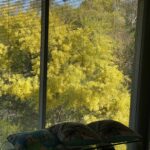Worms
There are hundreds of species of earthworms, those amazing underground movers and shakers that are so beneficial to have in the garden. They improve soil structure, increase the rate of decomposition of organic material, and make nutrients more available to plants. The tunnels earthworms leave also help to improve the aeration and drainage of the soil.
Garden worms
The earthworms found in cultivated or garden soil are foreign worms. They are called Peregrine earthworms because of their ability to move about and colonise new areas. They’ve travelled to Australia from all over the world, many of them probably arriving in pot plants brought here by the early settlers. They are very useful in the garden and should be encouraged.
Breeding
Earthworms are hermaphrodites, in other words each worm is both male and female. For fertilisation to take place two worms have to get together, each releasing sperm that are then stored in the sperm receptacles of the other. A sleeve of mucus holds the eggs and sperm, and later becomes a cocoon in which the young worms develop.
What happens if you cut a worm in half?
Gardeners who are squeamish about chopping worms up with a shovel when digging will be pleased to know that earthworms can sometimes regenerate body parts. For example if an earthworm loses its tail it can grow a new one.
Australian earthworms
Many Aussie worms keep to the territories that suit them best, and do not spread into disturbed or cultivated soil. This makes them useful indicators of the environmental history of particular areas. Australian native earthworms all belong to the one family, Megascolidae, which contains some of the largest species in the world. The Giant Earthworm of Gippsland (Megascolides australis) grows to about 4 metres (13′) long. The Squirter earthworm (Didymogaster sylvaticus) from coastal New South Wales is a deep reddish purple in colour. It usually measures about 15-25cm (6-10″), although some grow as large as 46cm (18″) long. If disturbed or threatened its body contracts, pressure builds up and jets of fluid are emitted from lines of pores running down the middle of the back. The fluid, which can rise as high as 46cm (18″) into the air, is comprised of salts and body wastes.
Shovel-headed garden worm (Placocephalus kewensis)
The origin of this fascinating worm is unknown. Its name, Placocephalus kewensis, means “plate-headed worm from Kew”, although reliable records show that it existed in Sydney years before it appeared at Kew Gardens in England. It grows about 23-30cm (9-12″) long and has five dark brown stripes along its back over a background of ochre-yellow, and a greyish-white or pinky-grey underside. The shovel-headed worm is a carnivore which exudes profuse quantities of slime as it crawls along feeding on insects and earthworms.
Contact information: Rory McDonnell, phone: (02) 4236 0009.



